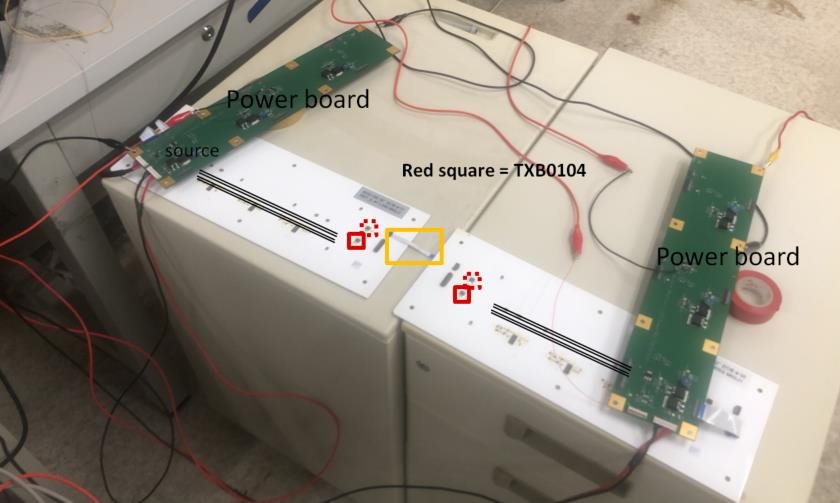Other Parts Discussed in Thread: SN74AHC541, SN74LVC244A, TXB0104, SN74AXC4T774
Hi Team,
I have some issue by using TXB0106.
Below is schematic diagram. The red block is TXB0106 for SPI signal/clk translation.
- 3.3Vin and 3.3Vout, using for driver
- The data rate is 7Mbps
- Use external power supply to provide 3.3V
- We measured the TXB0106(1) and TXB0106(12) data/clk waveform is match and good.
The issue description is showing as below.
- When ambient temp is up to 60C, we see the flicker on LED. We consider that the reason is that clk signal was affected. (The data seems ok.)
- When we measure the clk pin (one of TXB0106 output pin(input is connect to clk)), the flicker is more serious.
- We also connected a long wire(50cm) to one of TXB0106 output clk pin, the flicker is also more serious, but the LED is stable when we hold the termination of the wire.
Could you let me know the reason for above state based on your experience?
Regards,
Roy



